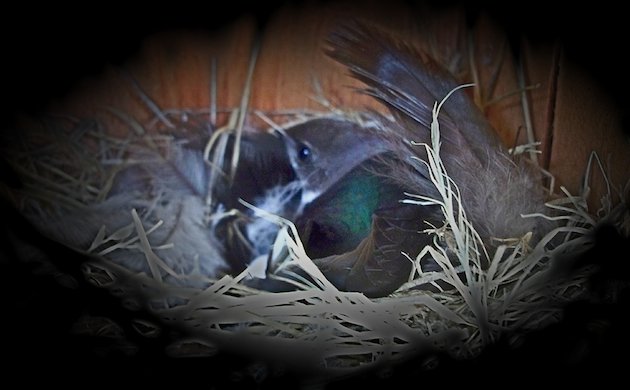
Every few years I am lucky enough to have Violet-green Swallows (Tachycineta thalassina) take up residence on one of my Bluebird trails. This year I have two pair nesting on two different trails! The featured image above shows a female incubating eggs from my first resident breeding pair back in 2007.
Violet-green Swallows will nest solitarily or in colonies and in my experience seem much more mellow than other swallow species. This is a male that was perched near the nest box of this years occupants. Click on photos for full sized images.
These elegant birds nest in cavities of various sites, including trees, cliffs, and nesting boxes. Less common but also recorded are nests in sand banks, streamside cut banks, and old nests of Cliff and Bank swallows. They like trees in open areas, like open groves or woodland edges. Nests are usually in hollow parts or in old woodpecker nests, between rocks in cliffs or in porous vapor holes of volcanic formations, and in nesting boxes under eaves of buildings or on trees1.
The Violet-green Swallow nest is an accumulation of dry grasses with a cup lined with feathers and sometimes hair or fine fibers. The four to six eggs are white and unmarked.
I have discovered that my iPhone takes an excellent close-up photo of the inside of the nest box without using a flash. I took this photo of newly hatched nestlings just the other day during my regular monitoring check. It’s not as clear as the photo of the eggs above but I did not want to disturb the female as she was circling the nest to resume her duties.
I was quite surprised to see how small these newly hatched nestlings are. There appear to be three newly hatched chicks and one egg unhatched (this nest had four eggs). The nestling in the middle of the photo is the most recognizable with its head turned to our left, the dark spot on the head is where its eye will be and the white area below is the beginning of a beak. You can also see the bird’s leftt wing sticking out.
The nestlings eyes open around day 8 to 10 and feathers break sheaths at day 10 to 13. These nestlings are probably around 10 days old except the runt seen in the middle of the photo.
The young leave the nest at 23 to 25 days of age and are primarily fed on the wing. This is mom coming back to the nest box to check on her new brood.
And another shot of the proud male perched nearby.
httpv://www.youtube.com/watch?v=p8nlea5eqE0
References: 1Birds of North America Online


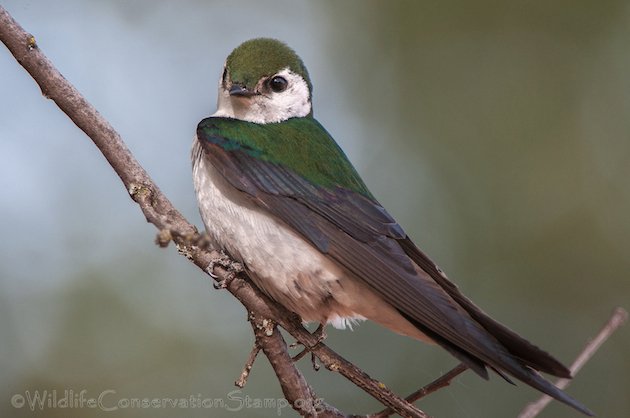
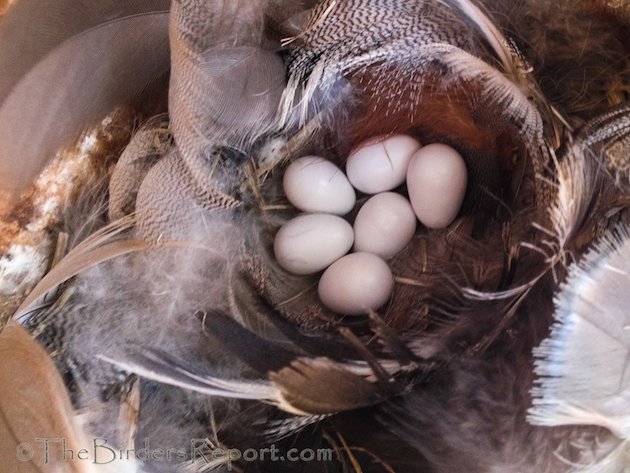
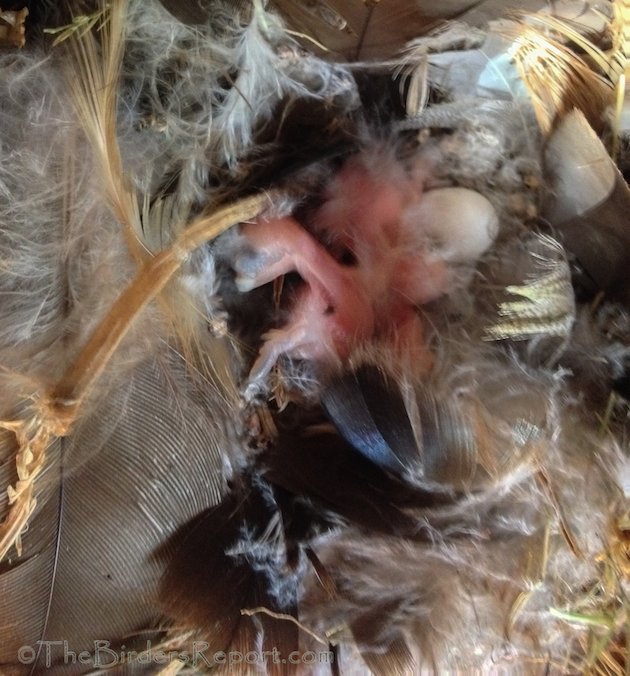
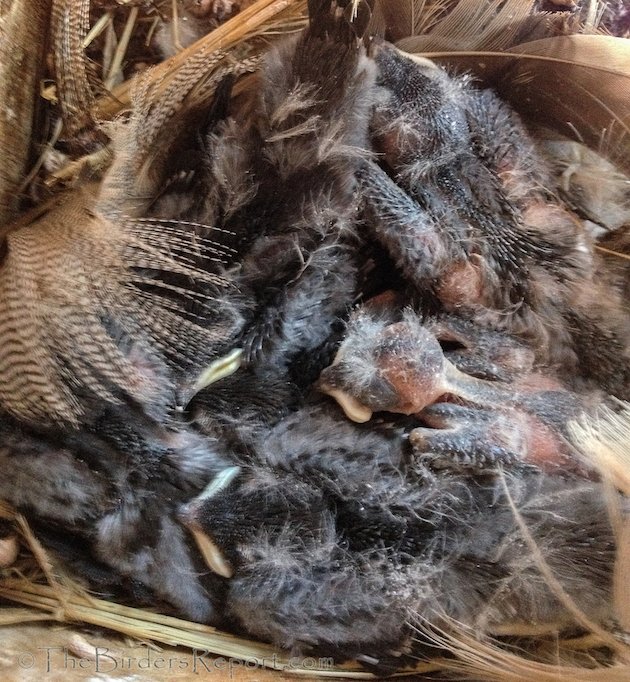
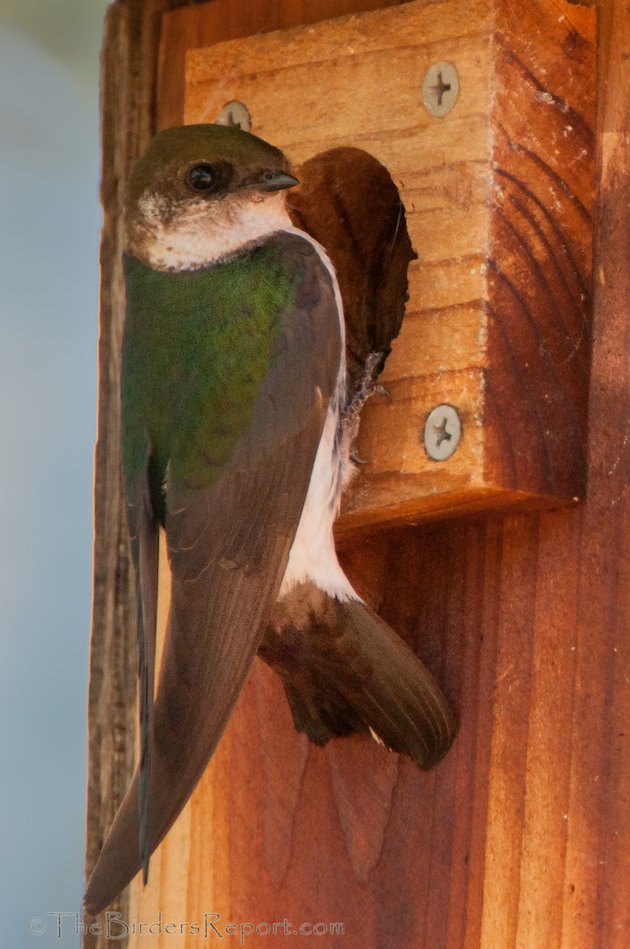
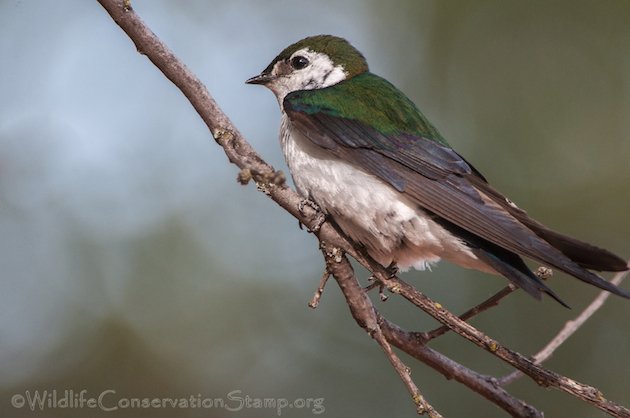





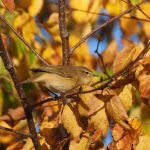
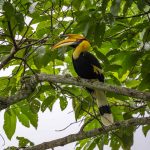


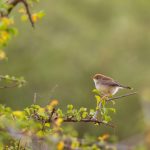
What wonderful photos of the babies and the nest! Thank you!
Thank you Wendy! Swallows of all persuasions are some of my favorite birds to watch. Their aerial acrobatics simply amaze me. To have them nesting in my birdhouses is an added bonus 😉
Do these violet green swallows fly out of the box or do they require a time to fledge on the ground like Robbins? I have a nesting pair that are very busy feeding their young. I also have 3 cats! My neighbours cat comes into our yard as well. We had Robbins fledging in my yard and kept our cats inside for a week. Gary and I stayed on watch to keep them safe. 3 of the four babies made it. One fell out of the nest, seemed very ill. It didn’t make it. We gave it a proper burial. I don’t want to miss the swallows to come out into the world and become prey. Any ideas?
Janette swallows have the ability to fly when they leave the nest. Violet-green Swallow parents will feed the young when perched but they may also feed them on the wing after leaving the nest. Swallows have notoriously week legs and spend much of their adult life on the wing.